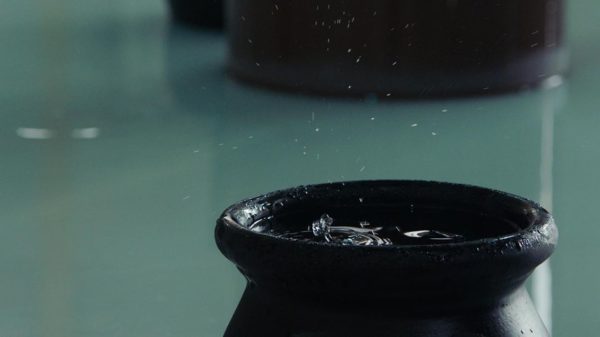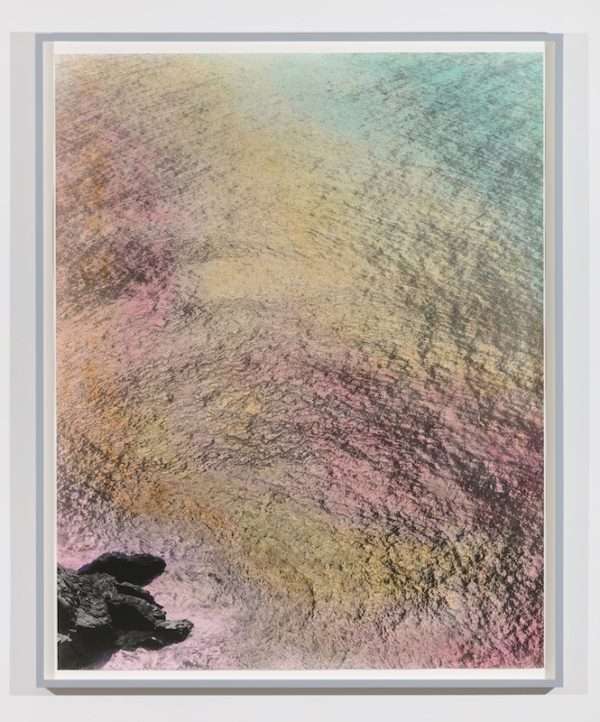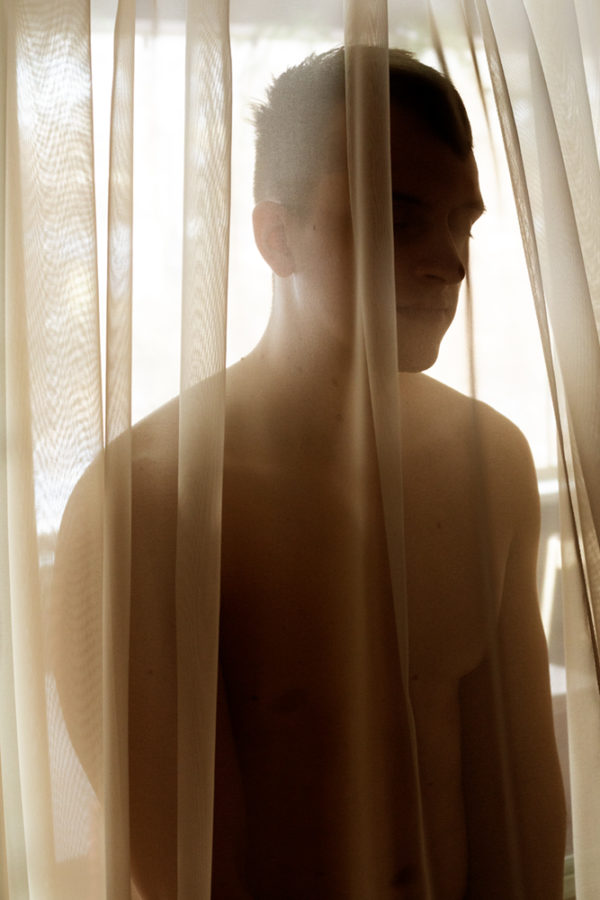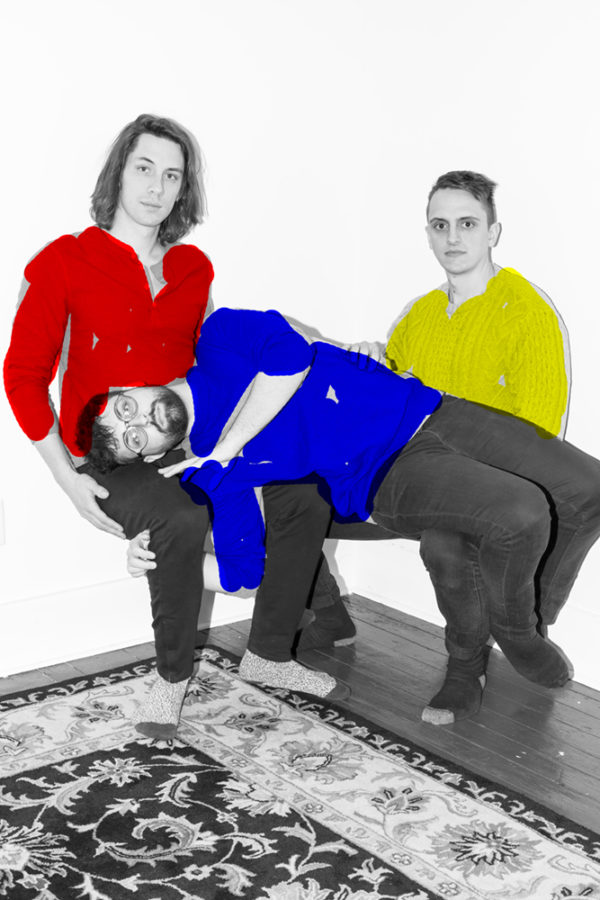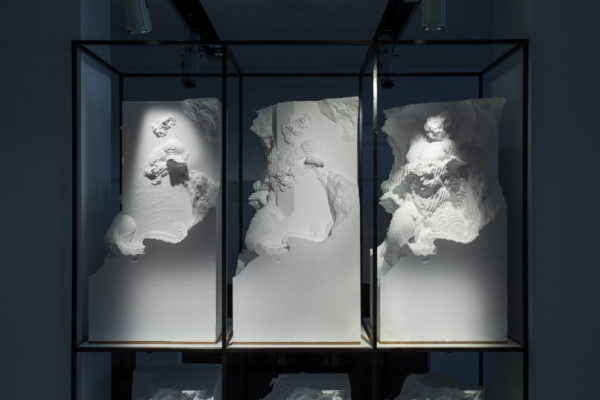




In Regards to Nostalgia at the Art Academy of Cincinnati.
Works by Mark Albain, Jesse Ly, and Aubrey Theobald.
Curated by Sso-Rha Kang, text via Under Main Magazine by C.M. Turner.
In October, the Art Academy of Cincinnati’s Pearlman Gallery opened In Regards to Nostalgia, an interdisciplinary group show exploring the poetics and complexities of nostalgia’s many forms. Featuring works in sculpture, painting, and photographic installation by artists Mark Albain, Jesse Ly, and Aubrey Theobald, In Regards to Nostalgia is the most recent exhibition curated by Sso-Rha Kang, the newly appointed Director of Galleries and Outreach at Northern Kentucky University.
In Regards to Nostalgia presents affective artworks placed into an exhibition design that heightens the effectiveness of those qualities. The works on view and Kang’s curatorial plan create a quietly energetic environment, where visual rhythms and aesthetic conversations between pieces occupy space. The works are well balanced throughout the gallery, creating moments for repose and response, to step back and place oneself into the artworks. Three large-scale photographic installations in black and white set the overall tone of the exhibition, drawing viewers into affective mind, body, and picture spaces. The effect is emotionally immersive, but not physically overwhelming. Two sculptures by Theobald help to break up the gallery area, encouraging the viewer to weave through the floor plan as though wading through a bank of memories. This physical consideration draws an acute parallel between the works on view and the exhibition design, where the viewers’ bodies are connected to the corporeal and spatial concerns of the exhibiting artists. The implication here is that nostalgia resides as much in the body as it does in the mind.
At the entry of the gallery, visitors are met by Albain’s Cage’s Night Blooming Cereus, a quiet image of a wilting flower blossom captured in soft grays. The photograph documents a plant propagated from a cactus belonging to composer John Cage. Albain’s accompanying statement for the work is poetic and opaque, giving the viewer little insight into his photographs. Instead, it creates a narrative connection to the works that brings the viewer into a voyeuristic and slightly uncomfortable space, like reading the pages of someone’s diary that they purposely left open. This sensation also applies to Albain’s photographic installation They Whisper in The Wings (J’s Back Study). Here, the artist evokes a stronger state of sense-memory. An abstracted swath of skin becomes a stand-in for lovers past and present – a constellation of moles and blemishes traced over by fingers, recognized in the bath, studied in bed.
Throughout the exhibition, Kang taps into the well of emotions surrounding the poetry of the past, whether lived, imagined, documented, or perceived. In the statement for the show, the curator notes, “A marker of moments situated in the poetic, nostalgia is a mysterious and potent encounter that exists in the complexities of loss and longing for something that once was.” Notions of loss and longing are overtly evident in Theobald’s Without These Winds I Would Be Invisible. Constructed of Portland cement, resin, varnish, preserved flora, a love letter, and printed ephemera atop a custom plinth, the series of three sculptural works traffics in the material of memorials. A statement from the artist relays: “Each monument presents a desperate grasp to connect grief to mundane labor and daily affect, to pay homage to the objects our lost ones leave behind, to the stability memories do offer, to the (always) unbearable weight of loss nostalgia can bring up out of the blue.”Theobald offers object displays a viewer can breathe life and memories into. Her material choices echo the materials of history, longevity, and humanity. She presents the brick road of countless walkways, the concrete of everywhere, and through these access points, we are able to feel a connection to the artist’s history, as well as our own.
Where Albain attunes to the overtly poetic and Theobald evokes the physicality in nostalgia, Ly’s installations cast an atmospheric acknowledgment throughout the gallery space, creating photographic spaces for reflection. His accompanying statement recognizes that the photographic process contains the contradictory act of simultaneously attempting to eternalize a moment while witnessing and acknowledging its end. With this understanding, Ly’s images operate within what he calls “the post-condition of all passing moments.” His pieces in the evolving series Still There and Here combine a backdrop of open beach views behind framed images that reference nature, freeze objects in time, and obscure bodies through motion and framing. Here, Ly works to hold the ephemeral static. His works function as stand-ins for memories – sometimes hazy, sometimes crisp, partially narrative, partially abstract, liminal and fleeting. Caught up within this imagery are aspects of vacation aesthetics, long summer days, the excitement and expanse of youth – frantic energy and the languor of heat, times of transition, times of estrangement. Perhaps it’s the artist’s recognition of the photographic condition that allows these pieces to carry so much resonance, inviting viewers into richly reflexive space. Regardless, Ly’s works create a through-line that ties the entire exhibition together by engaging with the multiple registers of nostalgia explored by Albain and Theobald in the poetic, the corporeal, the spatial, and the photographic. The gestalt achieved through Kang’s curatorial efforts brings together the artists’ works in a wonderfully affective and emotionally immersive exhibition.
For the curator, this is all very much the plan. Kang views exhibition-making as a form of world-building, in response to collective aesthetic experiences. She relates:
“Perhaps practical but essential to how I investigate aesthetic experience is through exhibition planning and design. How works are oriented in space can drastically effect how the show is experienced and felt. I’m interested in how various artists/singular works converse in space, which creates potential for works to collectively contribute to a wider narrative and allows something as ambiguous as mood to be felt within the exhibition.”
In Regards to Nostalgia is the third in a series of exhibitions that hold a similar resonance, but diverge in focal themes. The previous shows in the series, Sentiments of Here (2020, Wave Pool, Cincinnati, OH) and Gestures of Slowness (2020, The Carnegie, Covington, KY) focused on landscape and the body, respectively, while In Regards to Nostalgia homes in on the theme of memory. Beyond the conceptual and installation-based connections between Kang’s curatorial efforts, these three exhibitions are further linked by the inclusion of certain artists (artist Snow Yu was featured in both Sentiments of Here and Gestures of Slowness, Albain was featured in both Sentiments of Here and In Regards to Nostalgia). For Kang, working with specific artists multiple times while adding in new voices to continue conceptual and aesthetic conversations is key. She sees this move as both an act of building community and a key to successful exhibition planning, noting that her process is “intensely collaborative.”
That collaborative impulse is a current that runs strongly through In Regards to Nostalgia, and continues in Kang’s work at Northern Kentucky University. As the newly appointed Director of Galleries and Outreach, she recently launched a performance series that responds to the brutalist architecture specific to the NKU campus, with an inaugural performance by multimedia artist collective Froghole? (Cincinnati, OH). As evidenced through her thoughtful and careful curatorial work in shows like In Regards to Nostalgia, it is clear that Kang’s approach to exhibition planning and design can only serve to strengthen the creative communities she works with.
































